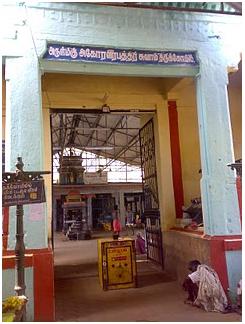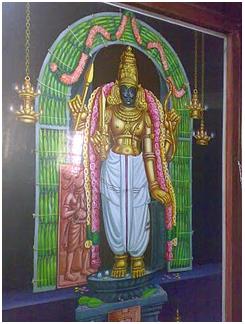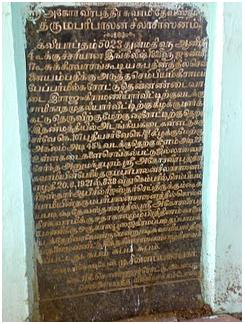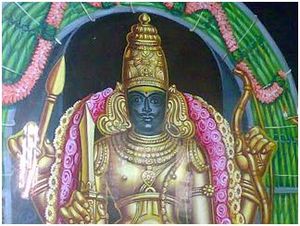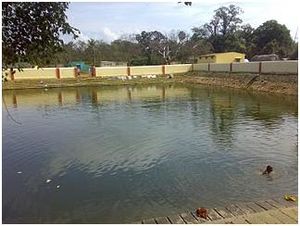Hanumanthapuram Sri Agora Veerabadhrar
Hanumanthapuram is a very remote village near Chengalpattu. The village is located off the road going from Chengalpattu towards Thirupporur after Perunthandalam and Senneri villages. The road that leads to this village is not easily motorable and is amidst the reserved forest zone. Hanumanthapuram has an ancient temple where the main deity is Sri Agora Veerabadhra Swamy and Goddess Sri Kaalikaambal.
Dhakshan (son of Sri Brahma and father of Sri Parvathi) performed a Yagnya. He had invited all Devas and Gods for his Yagnya except Lord Shiva, as he always disliked him because Lord Shiva married his daughter Sri Parvathi without his knowledge. But as per the rituals, he has to invite Lord Shiva, without which the Yagnya won’t be complete. But Dhakshan ignored Lord Shiva and also was not willing to give due offerings to Him in his Yagnya.
Knowing this Lord Shiva got furious and sent Lord Ganesha to stop Dhakshan’s Yagnya, but Lord Ganesha couldn’t succeed, followed by Lord Muruga who again couldn’t defeat Dhakshan to stop his Yagnya. Finally, He created a power from the droplets of His sweat and gave it a form and named Him Veerabadhrar. Veerabadhrar, who was created from Lord Shiva’s sweat, was assigned to defeat Dhakshan and stop his Yagnya.
Goddess Parvathi, who was also equally upset with Dhakshan’s attitude, created a Shakthi called Kaali and made her accompany Veerabadhrar in his mission to defeat Dhakshan. Sri Veerabadhrar went and chopped Dhakshan’s head with ease. From then Dhakshan didn’t have head at all. Later, with the prayers of Dhakshan’s wife, Sri Veerabadhrar blessed him with the head of a goat and hence Dhakshan is seen with the human body and goat’s head. It is believed that Dhakshan was defeated by Sri Veerabadhrar in this place.
Sri Veerabadhrar is seen facing north, holding many weapons. Goddess Sri Kaali is present just outside the sanctum, facing east. Sri Kaali is believed to be very powerful here. This village also has a separate temple for Sri Kaaliamman. Nandhi is seen facing south towards the Lord. This very unusual temple attracts lots of devotees during new moon days and full moon days. This place is said to cure people with mental illness. Many mentally challenged people are brought here and prayers are offered to Sri Agora Veerabadhrar. It is believed that Sri Agora Veerabadhrar blesses them to recover from their mental illness.
There is a beautiful temple pond in front of the temple, where many devotees take bath before visiting the temple. Also many bring mentally challenged people and bathe them here. Beetel leafed garland is offered to the Lord here. It is said that this place was once filled with beetel leaf creepers. Beetel leaf garland is considered auspicious for Sri Agora Veerabadhra Swamy here. The age of this temple is not known to many, even to the temple priests. There are no archeological evidences or whatsoever to date this temple. But the priests say that they have been serving this temple for 12 generations. The legend of this temple is passed on to the priests through their ancestors who also served in this temple.
There is an old stone inscription in this temple, belonging to 1921 where one Chinnappa Nayakkar of Ayanpuram (Ayanavaram), Chennai has donated his shop sites to the temple to be used for performing atleast one time pooja everyday.
On Pournami days, Archanas are performed to Sri Veerabadhrar here throughout the night.
Beautiful temple with rich heritage.

